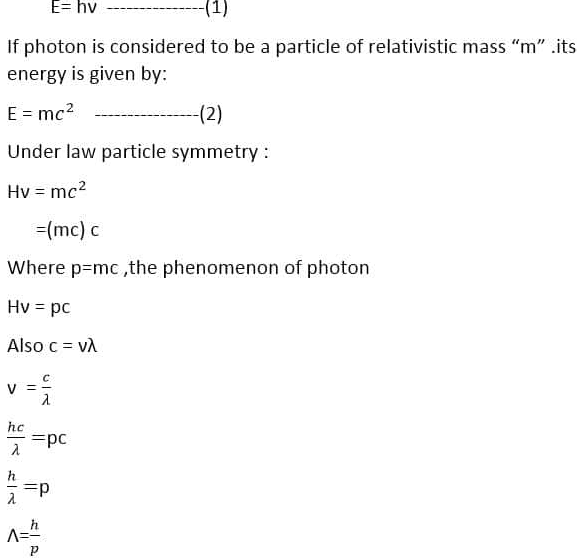Dual nature of matter and De broglie wavelength
What is dual nature of matter?
Our mental views of waves and particles are drawn from familiarity with very large-scale objects such as tennis balls and ocean waves. Like paul Davies, physicist and science writer it is impossible to visualize a wave-particle so do not try what then are we to do?
Neil Bohr views
According to Neil Bohr “The wave and particle aspects of a quantum entity are both necessary for a complete description. However, the two aspects cannot be revealed simultaneously in a single experiment. The aspect which is revealed is determined by the nature of the experiment being done.
The properties of diffraction and interference indicated that light consists of waves. But the photoelectric effect and Compton effect indicate that light consists of particles which are called photons. Thus light has dual nature behaves like particles as well as waves.
The experiments in which measure the e/m of electron indicate that the electron must be regarded as particle,But the electron diffraction experiments of Davisson and Germer and the G.P Thomson indicate that the electron must be regarded as a wave. In 1932 Stern performed experiments which showed that moving atoms or molecules behave as waves. Thus the wave property of moving electrons must also be attributed to all other particles of matter, protons, neutrons, atoms, molecules etc.
The properties of light and matter mentioned above lead us to the conclusion that both light and matter have dual wave-particle nature.
The properties of light and matter mentioned above lead us to the conclusion that both light and matter have a dual nature. It must be kept in mind that particle and wave properties are elementary,we can only observe one property in given experiment ,and not both at same time.
For example we observe the wave property in diffraction experiment but not the particle property. Also we observe the particle property in the Compton effect, but not the wave property. Therefore it is not possible to perform a single experiment in which the electron will behaves as a particle and wave.
De Broglie Hypothesis
It has been observed that phenomena like the photoelectric effect and the Compton effect could be explained if electromagnetic radiations were supposed to consist of packets of energy called quanta or photon which behaves like a particle and move through space with the velocity of light. On the other hand phenomena interference , diffraction and polarization could be explained if the light is treated as a wave phenomenon.
De broglie wavelength formula
This particular fact led De Broglie to make 1924 a daring suggestion that if light which is known to consist of waves can under certain situations assume the aspect of a particle then the particle should also behave like a wave. He based his reasoning on the assumption that nature possesses symmetry and that the two physical entities matter and wave must be symmetrical also. De Broglie took the quantum idea of the emission of energy of a photon of radiation of frequency is given by:

This equation is called de Broglie’s equation and this wavelength is called De Broglie’s wavelength. The novel idea of this equation is the wave-particle nature of matter with the relative motion of the particle a certain wave links with it. This idea leads to the dual nature of light also.
Delrogles hypornsus
thank you lord!